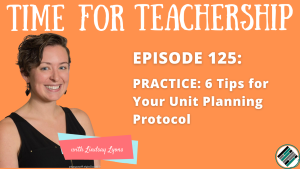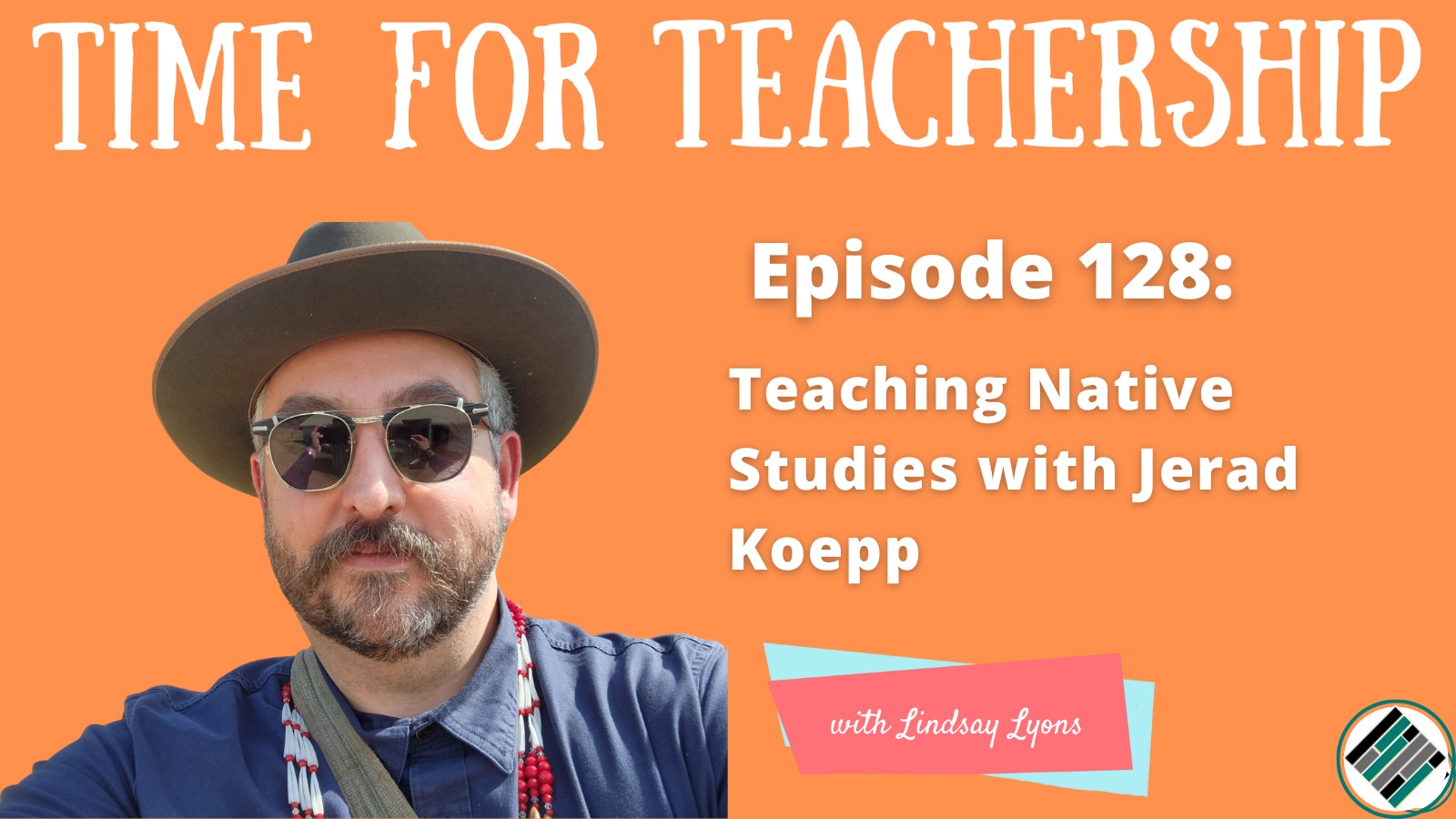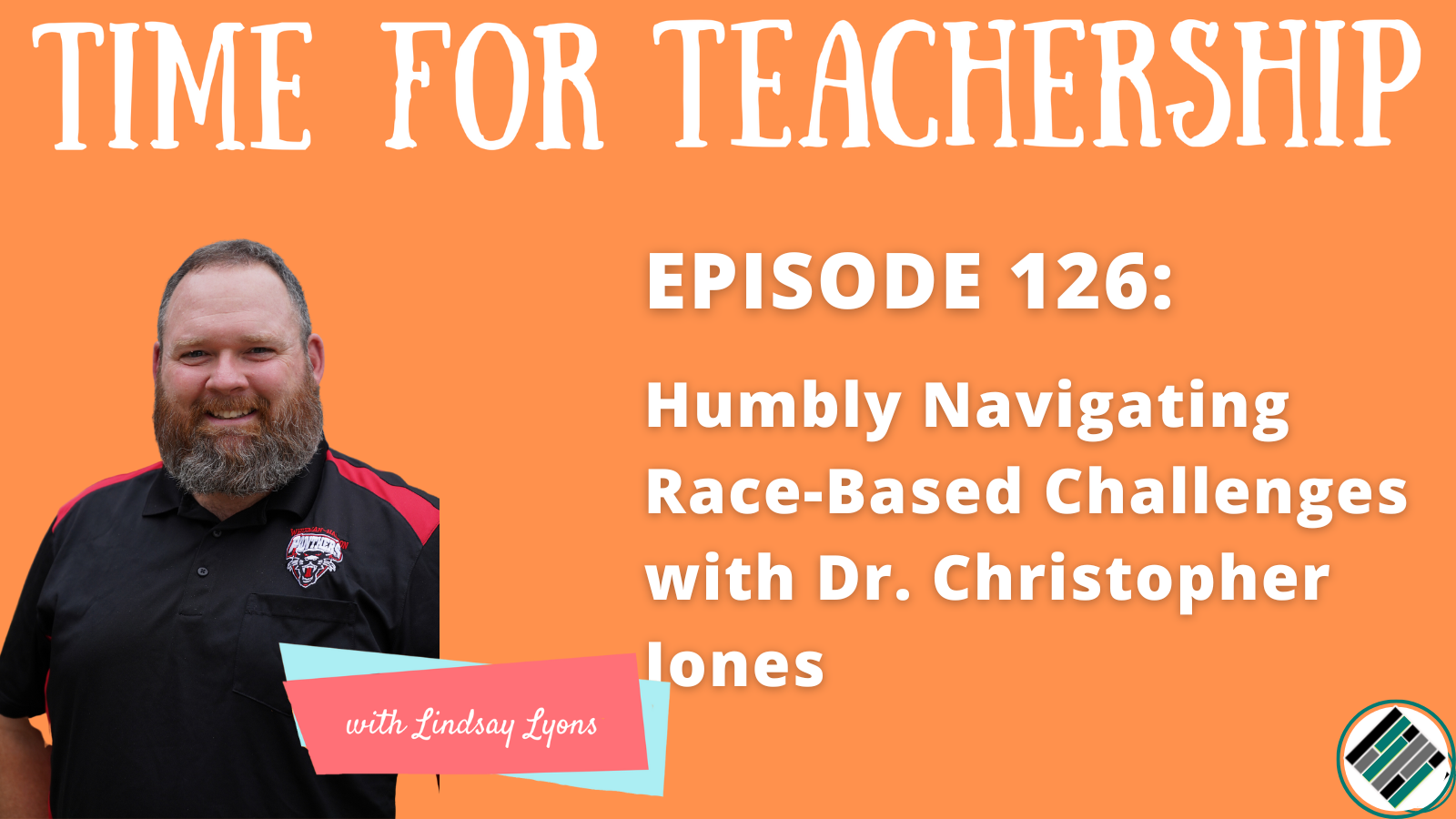
To wrap up the Unit Dreaming series, I want to reflect on the wisdom of the guests we’ve heard from in the past six episodes. Their reflections on how they felt during and after the unit planning process we used has helped me think about what to keep, what to emphasize, what to build in more support for, and what to change as I continue to refine my unit planning protocol that I use to coach teachers and teacher teams.
Unit Planning Tip #1: Spend time clarifying the Driving Question and let it focus you.
In episode 119, Debbie Tannenbaum said planning with the DQ was new for her, and it was helpful to have as a guide.
In episode 121, Tre’ Gammage talked about the value of framing adult Professional Development (PD) as a curriculum as a way of committing to a sustained focus throughout the year.
Whether you use the DQ for students or for educators, this is what focuses all of the work. One of the biggest lessons I have learned in this series is the importance of spending enough time on it that it resonates with the teacher. Then, everything else seemingly falls into place.
Unit Planning Tip #2: Invest in a reusable unit arc.
By the end of episode 122, Phil Januszewski said he felt like he had a solid “skeleton” to be able to reuse in different units as a way to incorporate the justice-based and human elements he wanted in his curriculum.
Debbie liked the simplicity of the unit arc outline we used. In the template, the three columns for each lesson are listed as: Focus, Protocol, Resource. I’ve been using the acronym “GPS” (Green Light, Protocol, Source) for the Investigating History curriculum through DESE, leveraging their term “green light” to indicate the focus content (and when students will have enough to move onto the next thing) and the term “Source” as a nod to its emphasis on source analysis.
Unit Planning Tip #3: Dr. Gholdy Muhammad’s HILL Model unlocks deep learning.
In episode 124, Jason Reagin built upon a Design project he’s done in the past with students. He credited Dr. Muhammad’s framework as the reason he took the project to a deeper level. (He even used 3 of the pursuits as a core component of the unit’s summative project!)
I cannot overstate how much I love Dr. Muhammad’s framework, based on the genius of historical Black Literary Societies, which includes the 5 pursuits of Identity, Criticality, Joy, Skills, and Intellect. I focus on the first three as I listed them here because I see these as underutilized. If you haven’t read them already, check out her books, Cultivating Genius and Unearthing Joy.
Unit Planning Tip #4: Learn about societal problems.
Phil Januszewski (episode 122) reflected on how helpful it would be to learn more about the problems in the world that are connected to the content areas we teach. From there, we can teach content knowledge and skills so that students can put it to use in addressing those problems.
Having an ongoing stream of problems, injustices, and current events will help with this. I find it helpful to identify one source (teachers can consider their preferred medium—I enjoy podcasts—and their content area or focus) and engage with it once a week or so. It might be a great activity to include in each team meeting: Share one event or situation in the world that connects to your content and you might be able to build a unit around.
Unit Planning Tip #5: Weave in other models and structures.
On episode 120, Dr. Bakshi McLean talked about using the Science-based 5 Es approach to a unit arc. She also shared her SHS steps (Standard, Hook, Society) which help teachers think about the same kinds of things I want to get teachers talking about!
If there’s a strategy or framework out there that can complement the approach I coach with, I want teachers and leaders to use it!
Unit Planning Tip #6: Talk it through with someone.
Gwen and Nancy Jorgensen talked about this in episode 123, and several guests also mentioned it. Simply being able to talk through ideas with another person was energizing, clarifying, and all-around helpful.
It would be great if everyone had a coach for this work, but it could be your team, a colleague, another teacher in a different district—it’s helpful to have someone to brainstorm with.
Final Tip
Whatever process you share with your team, ask teachers to reflect as they use it. This reflection piece has helped me listen to the people engaging with the unit planning protocol I use to coach people to create curriculum. They are the experts in what’s helpful about it and what isn’t. Leaders, remember to make space for these reflections just as we encourage teachers to do with students at the end of a unit!
To help you implement some unit dreaming with your staff, I’m sharing a 5-minute tutorial video I made on YouTube! (There’s also a link to a free resource in the YouTube description if you want it.) And, if you’re looking for more details on the ideas in this blog post, listen to episode 125 of the Time for Teachership podcast. If you’re unable to listen or you prefer to read the full episode, you can find the transcript here.


















